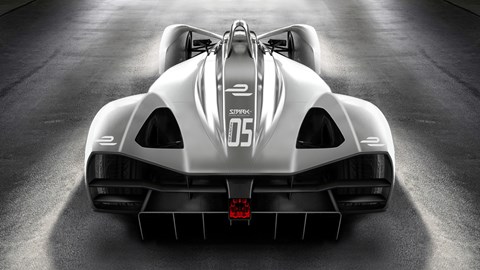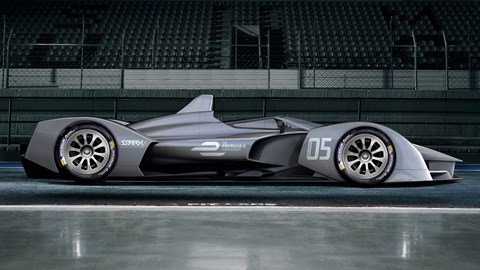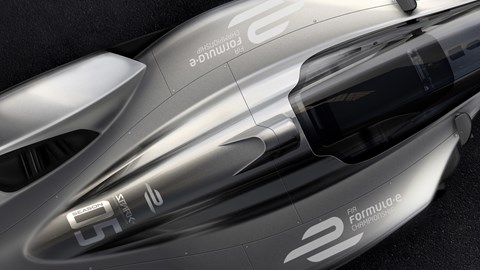► 2018 Formula E car more video game than F1
► New aero removes rear wing, encloses wheels
► Should go full race distance on single charge
Formula E has quickly gone from eccentric all-electric curiosity to the kind of grandstanding, politically-correct motor racing that an increasing number mainstream automotive brands want to get on board with. Audi, BMW, DS, Jaguar and Renault are all already involved.
Now Spark Racing Technology has revealed its concept for the 2018/2019 chassis, we can only see this interest accelerating faster. The damn thing looks like it’s waltzed right out of the graphics engine for the latest racing video game.
Ok, so it looks fancy, but what’s the big news for Formula E in 2018/2019?
Spark has been the chassis supplier for Formula E since its inception in 2013. This is actually slightly misleading, because the SRT01 – as the current car is codenamed – is really designed and built by Dallara, an Italian race car constructor with four decades of experience.
In March 2016, the FIA World Council put both the chassis and the battery supply contract out to tender for what will be the fifth season, taking place 2018/2019. Spark has once again won the chassis contract, apparently with a design that is set to move Formula E visually further from conventional forms of motorsport.

The battery contract, however, has this time gone to McLaren Applied Technologies (yes, a division of that McLaren) instead of original supplier Williams Advanced Engineering (you guessed it, that Williams).
McLaren was also the original motor supplier to Formula E, but evolution of the regulations means teams are now free to use other designs if they want. The same is expected to be true for batteries once this new contract finishes in time for Formula E season seven (2020/2021).
Does the new McLaren battery mean Formula E cars will be able to go a full race distance on a single charge?
That’s the plan. In case you’re not aware, at the moment Formula E drivers have to change cars mid-race in order to complete the requisite distance.
The new battery pack will therefore deliver a 100% increase in range, helped by capacity that jumps from the present 28kWh to 54kWh.
While using the latest technology means the energy density in the individual battery cells is expected to rise, there is no way the new, extended range battery packs won’t also be heavier.
Something that Spark has confirmed in its announcement of the new chassis concept.
Back to this new Formula E chassis, then. What’s new?
You’ll note that 54kWh is 2kWh short of being exactly double the existing 28kWh rating – so the range improvement isn’t coming entirely from the bigger battery. Spark says that driving twice the race distance ‘will be accomplished by more efficient aero design, lower weight and better efficiency in the drivetrain.’
The aero innovation is obvious – not only are the wheels now enclosed within drag-reducing bodywork, there’s no conventional rear wing at all.

So while Formula E has always stated it’s more interested in advancing electricity as an energy source than it is fancy aerodynamics – the theory being that improvements in powertrain and battery tech are more applicable to real-world gains in the electric mobility sector – it seems clear that some aero smarts are necessary for the race cars to go further.
As for weight, Spark is talking about a reduction of 10% (around 40kg, most likely) despite ‘new battery tech that will be heavier’.
To achieve this it is ‘working on new innovating solutions using new materials.’ Today’s Formula E cars are already made from a mix of carbonfibre and aluminium, and are built to withstand FIA crash-testing, so it’ll be interesting to hear more about developments in this area.
Safety remains an important aspect for all modern motorsport, and you can see the 2018 Formula E concept includes much built-up protection for the driver.
Finally, according to Formula E: ‘The decision to continue with a sole supplier for the chassis also stems from a desire to control costs. The key points of the tender were aimed at producing attractive cars that are ingrained with a spirit that looks to the future, which is exactly this championship’s unique feature.’
No kidding.
